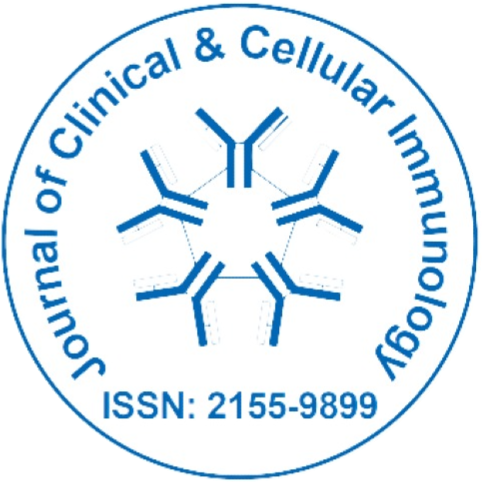
Journal of Clinical and Cellular Immunology
Open Access
ISSN: 2155-9899

ISSN: 2155-9899
Kriegova E, Petrackova A, Smrzova A, Schubertova M, Schneiderova P, Dyskova T, Skacelova M, Mrazek F and Horak P
Palacky University Olomouc, Czech Republic
Posters & Accepted Abstracts: J Clin Cell Immunol
Statement of the Problem: Systemic lupus erythematosus (SLE) is a remarkably heterogeneous autoimmune disease. The greatest challenges remain in management of organ damage and lupus nephritis (LN), one of the most feared phenotypes in SLE. Despite tremendous effort, our knowledge on serum protein pattern in this severe SLE manifestation is still limited. The purpose of this study was to investigate the serum protein pattern of organ damage and LN in SLE using a highly sensitive multiplex Proximity Extension Immunoassay (PEA) on 92 inflammation-related proteins. Methodology & Theoretical Orientation: We enrolled 75 Czech patients with SLE, subgroups were formed according to the organ damage (assessed by the SLICC/ACR damage index, SDI) (SDIâ�?¥1, n=42; SDI=0, n=33) and biopsy-proven presence of LN (no LN, n=48; LN, n=27). The serum levels of 92 inflammation-related proteins were assessed by PEA (Proseek Multiplex, Olink Bioscience, Sweden). Statistical tests (Student t-test, Benjamini-Hochberg correction) were performed using GenEx (Sweden), p-valueâ�?¤0.05 was considered as significant. Findings: SLE patients with organ damage had elevated serum levels of IL-8, CCL2, IL-6, CCL11, FGF21, MMP10, IL-18, CCL3, FGF5 and FGF23 comparing to those without organ damage. Of these, enhanced levels of CCL11, MMP10s and CCL2 were informative for identification of patients with organ damage. Importantly, IL-8 and MMP10 also correlated with disease activity (râ�?¤0.355, pâ�?¤0.002). Comparing patients with/without LN, elevated levels of CSF1, sCX3CL and GDNF, sCD40 (Pcorr<0.05) were detected and showed usefulness in prediction of this severe SLE manifestation. Although all upregulated proteins correlated with disease activity, the best correlation was observed for sCX3CL1 and GDNF (râ�?¥0.403, pâ�?¤0.0003). Conclusion & Significance: This highly sensitive PEA analysis identified serum pattern of organ damage and LN, with many novel candidate proteins detected. Their exact role and suitability as biomarkers in SLE deserves further investigation.
Dr. Eva Kriegova is an immunologist at the Faculty of Medicine and Dentistry, Palacky University Olomouc, Czech Republic. She is leader of Molecular Immunology group and her research interest is focused on molecular mechanisms of immune processes ongoing in inflammatory lung disorders and autoimmune diseases, hematological malignancies and orthopaedic disorders.
Anna Petrackova is a PhD student of Immunology at Palacky University Olomouc, Czech Republic. Her research is focused on gene expression studies of inflammatory mediators in autoimmune disorders and hematological malignancies.